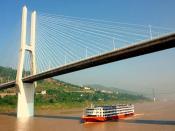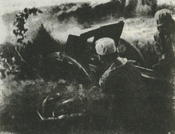A Plan of the investigation
The victory of the Chinese Communist Party (CCP) in the Chinese civil war had shocked the West, especially the US, as it saw this as an evidence of the spread of communism in Asia. The aim of my investigation is to find out how the land reform policy helped the CCP to win the Chinese civil war between 1946 and 1949. This investigation will be carried out through books (including a high school text book approved by the teaching material censor committee of China in 2002, now widely used throughout China), on-line articles, and primary documents from the collected works of Mao Tse-tong.
Words- 139
B Summary of evidence
1. How the Chinese Civil War between 1946 and 1949 started
On August 15th 1945, Japan surrendered ending WW2. The withdrawal of Japanese troops left a power vacuum within a short period of time in China.
Both main parties, the capitalist Nationalist KuoMingTang(KMT) and the Chinese Communist Party(CCP), wanted to take over the country. After the eight-year anti-Japanese War the masses from all ranks wanted peace giving Chiang Kai-Shek, the leader of KMT at that time, great pressure not to continue a war against the CCP and, also, he was not well prepared for any wars. Both sides signed a truce agreement, which issued a cease-fire order, on Jan 10th 1946. However, by June 26th 1946 the KMT broke this agreement signed five months before and started to attack the CCP in communist-controlled "liberated areas" renewing the civil war that had its roots from 1926.
2. What difficulties did the CCP face in this war?
In the beginning, the KMT enjoyed clear superiority both militarily and economically. In June 1946, KMT had regular troops of 68 divisions with 2 million soldiers along with irregular troops,



Civil War in China.
Brilliant bibliography and a fantastic essay.
5 out of 5 people found this comment useful.